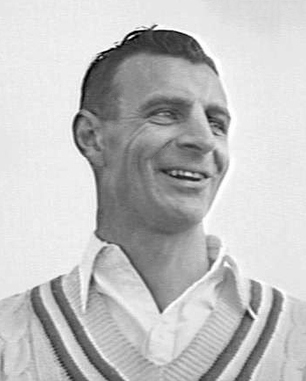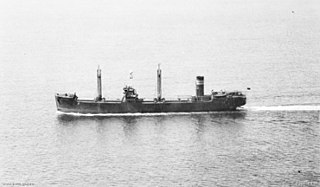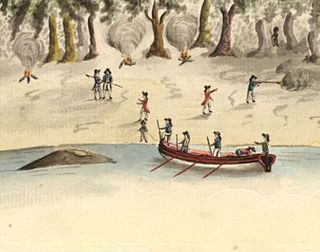
Vice-Admiral William Bligh was a British officer in the Royal Navy and a colonial administrator. He is best known for the mutiny on HMS Bounty, which occurred in 1789 when the ship was under his command. After being set adrift in Bounty's launch by the mutineers, Bligh and his loyal men all reached Timor alive, after a journey of 3,618 nautical miles. Bligh's logbooks documenting the mutiny were inscribed on the UNESCO Australian Memory of the World register on 26 February 2021.

The Boyd massacre occurred in December 1809 when Māori of Ngāti Pou from Whangaroa Harbour in northern New Zealand killed and reportedly ate between 66 and 70 European crew members from the British brigantine ship Boyd. This was the highest number of Europeans killed by Māori in a single event in New Zealand.

The 1998 Sydney to Hobart Yacht Race was the 54th annual running of the "blue water classic" Sydney to Hobart Yacht Race. It was hosted by the Cruising Yacht Club of Australia based in Sydney, New South Wales. It was the most disastrous in the race's history, with the loss of six lives and five yachts. 55 sailors were rescued in the largest peacetime search and rescue effort ever seen in Australia.

From 31 May to 8 June 1942, during World War II, Imperial Japanese Navy submarines made a series of attacks on the Australian cities of Sydney and Newcastle. On the night of 31 May – 1 June, three Ko-hyoteki-class midget submarines, each with a two-member crew, entered Sydney Harbour, avoided the partially constructed Sydney Harbour anti-submarine boom net, and attempted to sink Allied warships. Two of the midget submarines were detected and attacked before they could engage any Allied vessels. The crew of M-14 scuttled their submarine, whilst M-21 was successfully attacked and sunk. The crew of M-21 killed themselves. These submarines were later recovered by the Allies. The third submarine attempted to torpedo the heavy cruiser USS Chicago, but instead sank the converted ferry HMAS Kuttabul, killing 21 sailors. This midget submarine's fate was unknown until 2006, when amateur scuba divers discovered the wreck off Sydney's northern beaches.

Benjamin Boyd was a Scottish entrepreneur who became a major shipowner, banker, grazier, politician and slaver, exploiting South Sea Islander labour in the British colony of New South Wales.

HMAS Armidale (J240), named for the then town of Armidale, New South Wales, was one of 60 Bathurst-class corvettes constructed during World War II, and one of 36 initially manned and commissioned solely by the Royal Australian Navy (RAN).

The 12 ft Skiff is a development dinghy class dating back to the early 20th century. It is sailed in Australia and New Zealand. It is 12 ft (3.7 m) in length, hence the name, and is a two-man boat. Both the crew and the helm are able to use the trapeze at the same time. It has an asymmetrical spinnaker and a jib, in addition to the mainsail.

Balambangan Island is an island in Kudat Division, Sabah, Malaysia. It is located off the northern tip of Borneo and is situated just about 3 kilometres west of Banggi Island. It is now part of the Tun Mustapha Marine Park.

Stanley George Sismey was an Australian cricketer. Sismey, who achieved the rank of Squadron Leader in the Royal Australian Air Force (RAAF) during World War II, was the official Commanding Officer of the Australian Services XI that played England in the Victory Test series that followed VE Day in 1945. He was not, however, the on-field captain, an honour bestowed upon pre-war Test cricketer Lindsay Hassett. Sismey was the team's wicketkeeper and a middle order batsman during the five unofficial Test matches.
HMCS Integrity was a cutter built by the Colonial Government of New South Wales in 1804. She was the first vessel ever launched from a New South Wales dockyard and carried goods between the colony's coastal settlements of Norfolk Island, Newcastle, New South Wales, Van Diemen's Land and Port Jackson. In 1804 she took part in a series of voyages to Van Diemen's Land with the aim of founding a colony at Port Dalrymple, the site of the modern settlement of George Town, Tasmania.

Britannia was a 301 burthen ton full-rigged whaler built in 1783 in Bridport, England, and owned by the whaling firm Samuel Enderby & Sons. She also performed two voyages transporting convicts to Port Jackson. She was wrecked in 1806 off the coast of New South Wales.
Betsey was a ship that was launched at Chittagong in 1803. She was abandoned off the coast of New Zealand in 1815.

SS Iron Knight was a bulk carrier that was built in Scotland in 1937 for the Australian Broken Hill Pty, Ltd (BHP) to carry iron ore. A Japanese submarine sank her by torpedo off the coast of New South Wales in 1943, killing 36 of her crew. A wreck that was identified as that of Iron Knight is protected by the Australian federal Underwater Cultural Heritage Act 2018.

The Hawkesbury and Nepean Wars (1794–1816) were a series of conflicts where British forces, including armed settlers and detachments of the British Army in Australia, fought against Indigenous clans inhabiting the Hawkesbury River region and the surrounding areas to the west of Sydney. The wars began in 1794, when the British started to construct farms along the river, some of which were established by soldiers.
SS Iron Chieftain was a bulk carrier that was built in Scotland in 1937 for the Australian Broken Hill Pty, Ltd (BHP) to carry iron ore. A Japanese submarine sank her by torpedo off the coast of New South Wales in 1942, killing 12 of her crew. Her wreck is protected by the Australian federal Underwater Cultural Heritage Act 2018.
Tedbury, also known as Tidbury and Tjedboro, was a Darug Aboriginal Australian involved in frequent acts of resistance to British colonists in the early years of New South Wales. He was the son of noted warrior and rebel Pemulwuy.
Norfolk Island convict mutinies were a series of armed uprisings by convicts on the penal colony of Norfolk Island. All were unsuccessful.

The King's Cup is Australia's blue riband annual rowing race for men. Since 1878 it has been contested by state representative senior heavyweight men's coxed eights at the annual Australian Interstate Regatta. Since 1973 the Australian Interstate Regatta has been conducted on the final day of the week-long annual Australian Rowing Championships. The King's Cup is the final event of the Australian Championships and the Interstate Regatta.
M24 Japanese Midget Submarine wreck site is a heritage-listed former midget submarine and now archaeological site located in unincorporated waters off Sydney's Northern Beaches in New South Wales, Australia. The Ko-hyoteki-class midget submarine was designed by the Japanese Imperial Navy and built from 1941 to 1942 by Kure Naval Yard or Ourazaki Naval Yard. The site was added to the New South Wales State Heritage Register on 7 December 2007.












